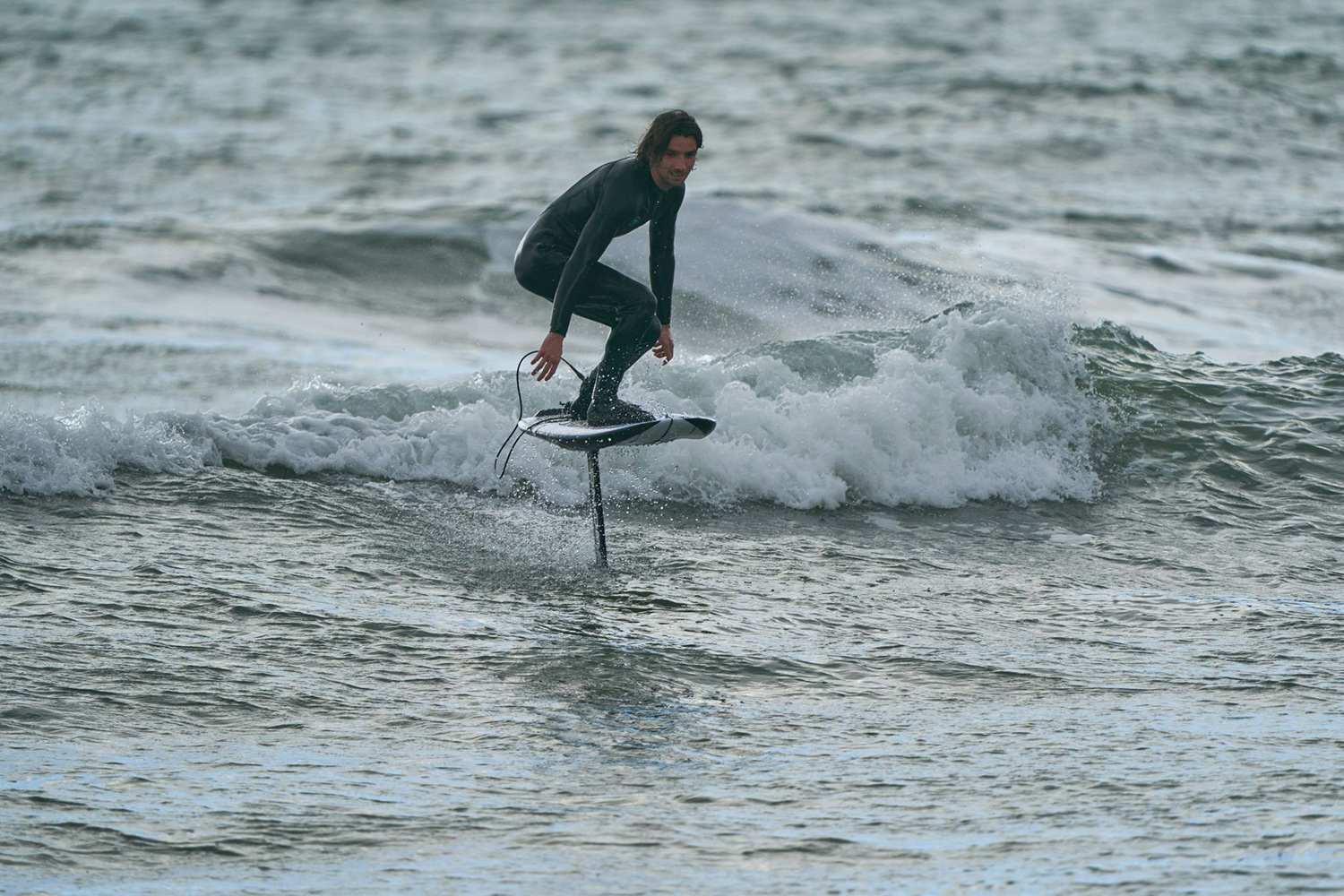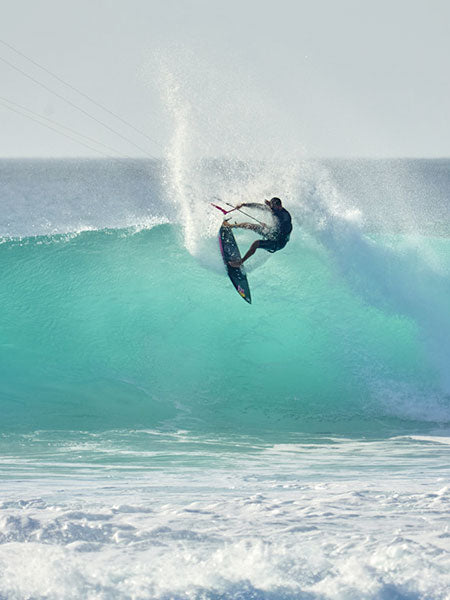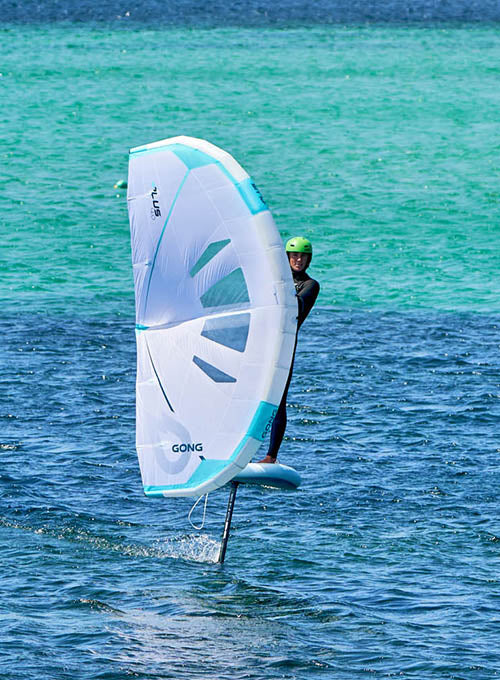Identify the right waves for surf foiling
Soft whitewater is all you need for achieving a take off on a surf foil! The right amount of whitewater is the kind that would have allowed a beginner in longboarding to stand up easily. That is to say, a foam that’s powerful enough to push you but that doesn’t shake you in all directions, so quite small.

On this type of wave there is therefore no reason to be more apprehensive about doing a take off with a surf foil than with a conventional board. Surf foiling should be practiced on soft waves with gentle slopes. If the foam is pushing you in an uncontrolled overspeed towards the shore, it is because you have chosen to take off on a wave that is too powerful. The ideal wave should allow you to maintain control of your speed by keeping your weight forward. When you do decide to stand up, the front of the board is naturally lightened of your weight for an instant which helps you get off the ground. If you keep your hands on the front of the board, and therefore your weight, the foil must not take off on its own. If you take off anyway, it’s because the wave is too powerful. So take it slowly and step by step, by choosing (too) soft waves first.
Ideally, the wave you choose to take off on is a breaking point that peels off to the right or to the left. This will make it easier to get out of the wave to try a connection by pumping out to sea. A close-out can lock you towards the beach where depth is lacking for your foil to turn around. However, a close-out section neglected by other surfers can also be your opportunity to take off far from the crowds and either catch up with the section, because the speed in foiling is just awesome in this situation, or find an area that allows you to turn around facing the wave. To get over the whitewater, paradoxically, you have to make your foil sink slightly to make it pass under the disturbances of the wave, without touching the wave with your hull … A finesse of control of your foil that comes with practice;). As with classic surfing, you quickly understand which waves are the nuggets you shouldn’t let pass. It’s up to you to identify them for long flights that only the energy of your legs will limit ;).










